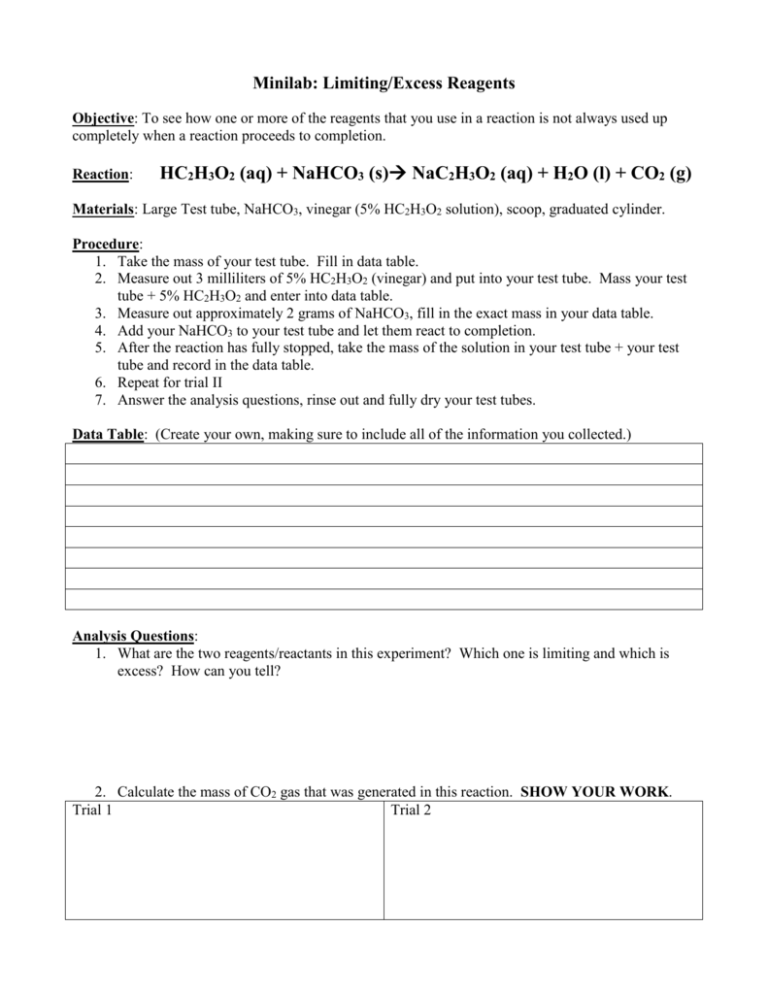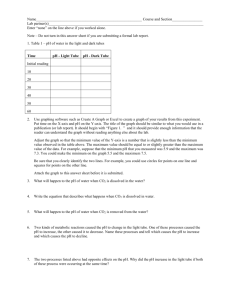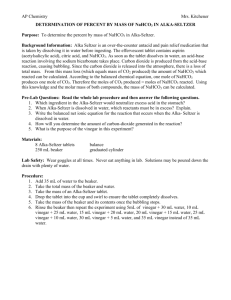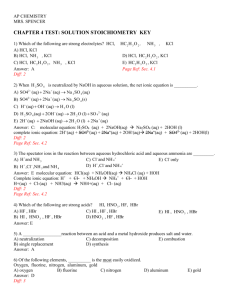Minilab limiting,excess reagent
advertisement

Minilab: Limiting/Excess Reagents Objective: To see how one or more of the reagents that you use in a reaction is not always used up completely when a reaction proceeds to completion. Reaction: HC2H3O2 (aq) + NaHCO3 (s) NaC2H3O2 (aq) + H2O (l) + CO2 (g) Materials: Large Test tube, NaHCO3, vinegar (5% HC2H3O2 solution), scoop, graduated cylinder. Procedure: 1. Take the mass of your test tube. Fill in data table. 2. Measure out 3 milliliters of 5% HC2H3O2 (vinegar) and put into your test tube. Mass your test tube + 5% HC2H3O2 and enter into data table. 3. Measure out approximately 2 grams of NaHCO3, fill in the exact mass in your data table. 4. Add your NaHCO3 to your test tube and let them react to completion. 5. After the reaction has fully stopped, take the mass of the solution in your test tube + your test tube and record in the data table. 6. Repeat for trial II 7. Answer the analysis questions, rinse out and fully dry your test tubes. Data Table: (Create your own, making sure to include all of the information you collected.) Analysis Questions: 1. What are the two reagents/reactants in this experiment? Which one is limiting and which is excess? How can you tell? 2. Calculate the mass of CO2 gas that was generated in this reaction. SHOW YOUR WORK. Trial 1 Trial 2 3. Calculate how many moles of NaHCO3 we used in this reaction based on the mass we used. SHOW YOUR WORK. Trial 1 Trial 2 4. Calculate how many moles of HC2H3O2 we used based on the mass, considering that the solution is only 5% HC2H3O2 and 95% water by mass. SHOW YOUR WORK. Trial 1 Trial 2 5. Based on the moles you calculated, does the limiting and excess reagents you determined in question 1 make sense? Calculate stoichiometrically based on the limiting reagent how many grams of CO2 should have been produced. SHOW YOUR WORK. Trial 1 Trial 2






